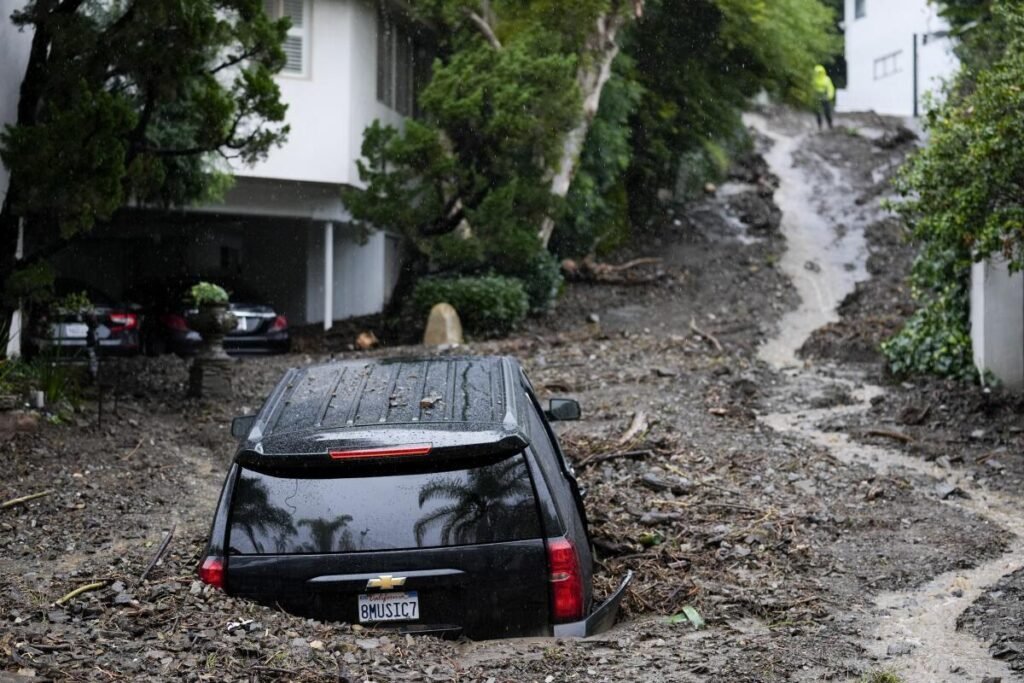A storm of historic scale hit Los Angeles, unleashing a deluge that resulted in three fatalities and significant chaos across Southern California. This weather event, marked by intense rain, led to flash flood advisories, mudslides, and widespread power outages, highlighting the vulnerability of the region to atmospheric rivers.
Highlights
- A devastating storm caused unprecedented rainfall in Los Angeles, leading to mudslides, flooding, and power outages across the state.
- Emergency services conducted numerous rescues, including from swift-moving waters and stranded individuals, amid flash flood alerts.
- The storm’s impact was widespread, affecting homes, the homeless population, and prompting the closure of several attractions and schools.
Record Rainfall and its Consequences
Los Angeles and its surrounding areas experienced between 5 and 10 inches of rain, causing rivers of mud and debris to flow through neighborhoods, including those with high-value homes. The storm, fueled by an atmospheric river, was the second of its kind to hit the state in a short period, emphasizing the extremity of weather patterns affecting the area.
Emergency services were stretched thin, rescuing individuals from dangerous waters and assisting those in precarious situations, such as homeless individuals stranded on river islands. The power outages affected approximately 710,000 people, evidencing the storm’s severe impact on the state’s infrastructure.
Community and Government Response
The response to the storm involved a concerted effort from firefighters, police, and emergency services to manage the immediate dangers posed by the flooding and debris. Los Angeles Mayor Karen Bass called for residents to avoid unnecessary travel and stay safe. Shelters expanded their capacity to accommodate the nearly 75,000 homeless individuals in the city, providing refuge from the relentless rain.
Educational institutions and attractions, including Disneyland, closed in response to the adverse weather, prioritizing public safety. Despite these measures, the city’s resilience was tested by the storm’s intensity, which also led to environmental concerns such as significant sewage spills affecting the coastline.
Forecasters warned of continued rainfall, with predictions of up to 14 inches in certain areas, suggesting that the threat of flooding and landslides remained high. Authorities advised the public to stay vigilant, as the ground, already saturated, could not absorb more rainfall, increasing the risk of further landslides and flooding.
This event underscores the challenges faced by urban areas in managing extreme weather events, highlighting the importance of preparedness and responsive action to mitigate the impacts of such unprecedented storms.

